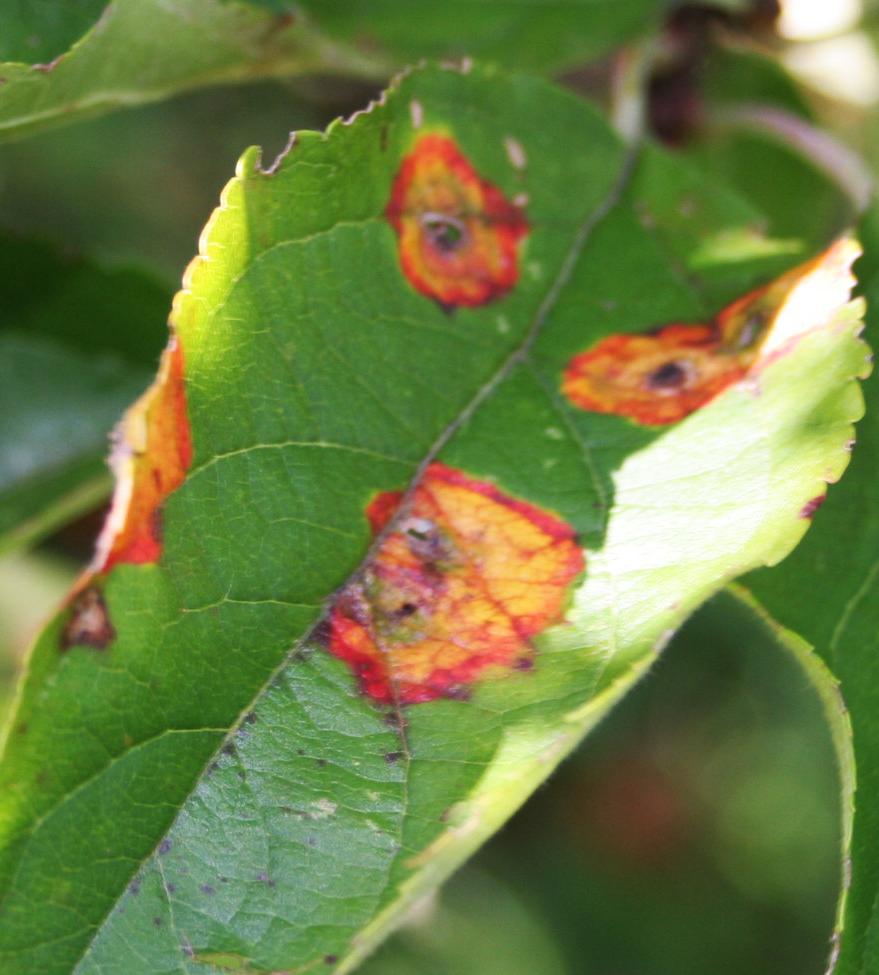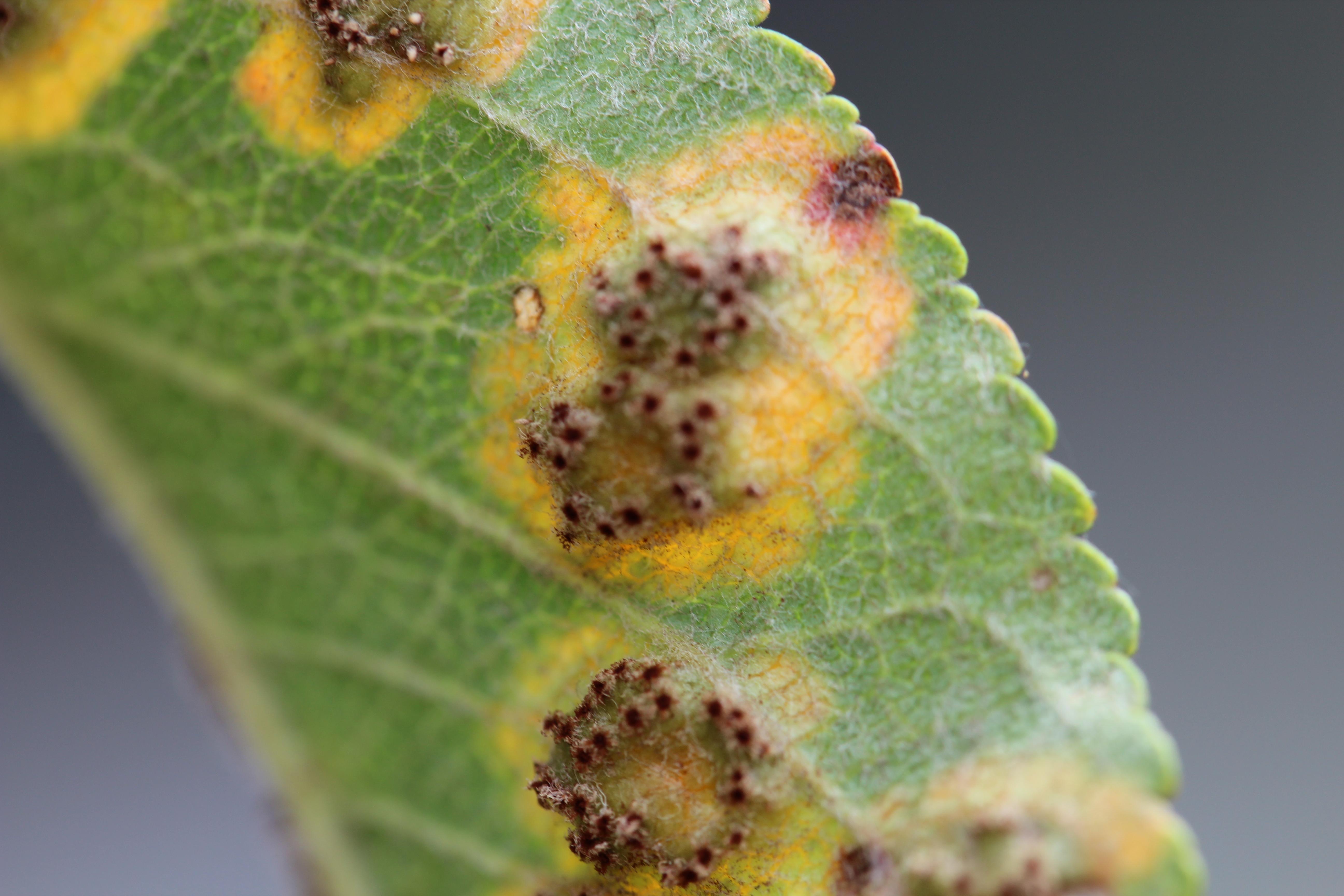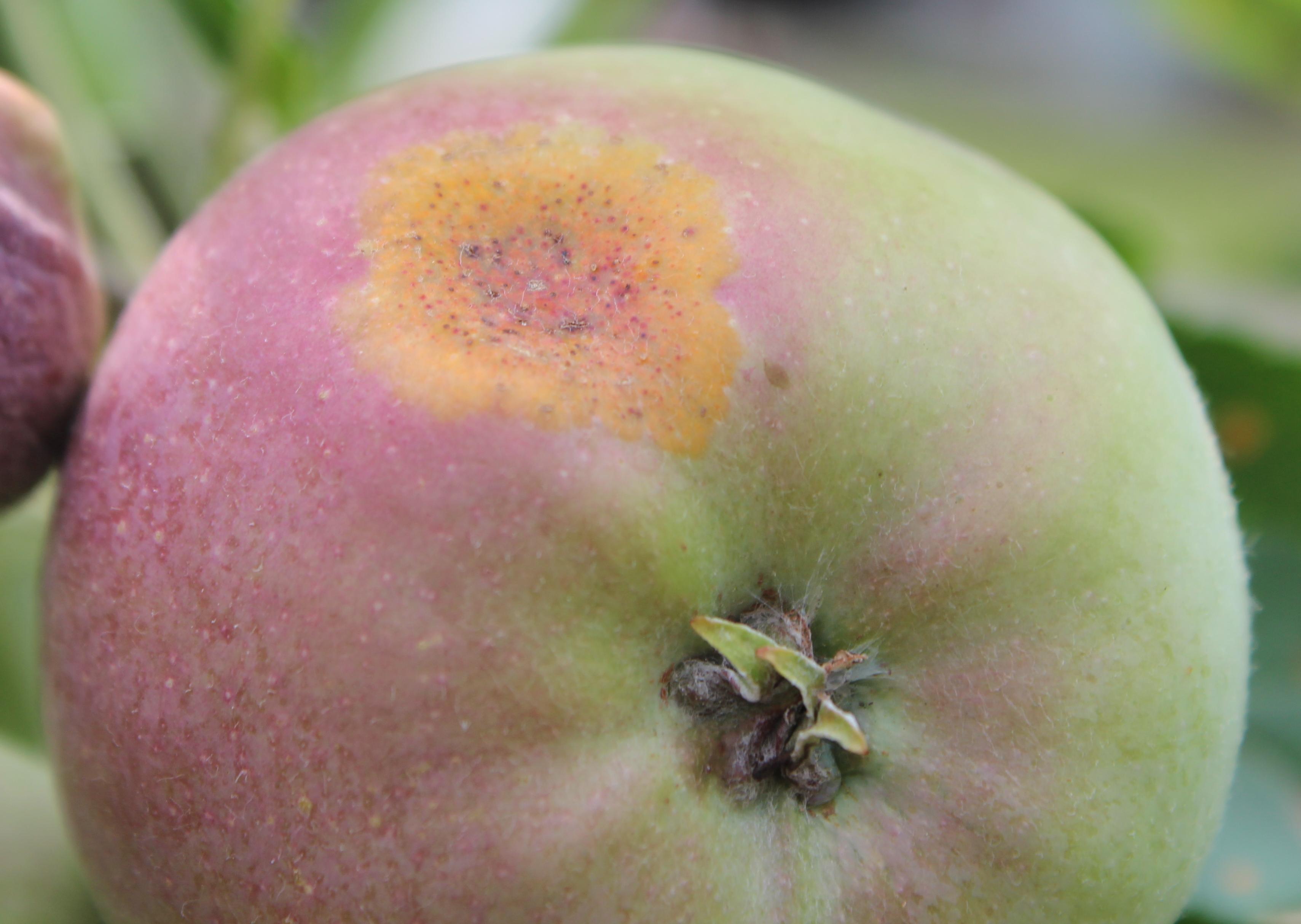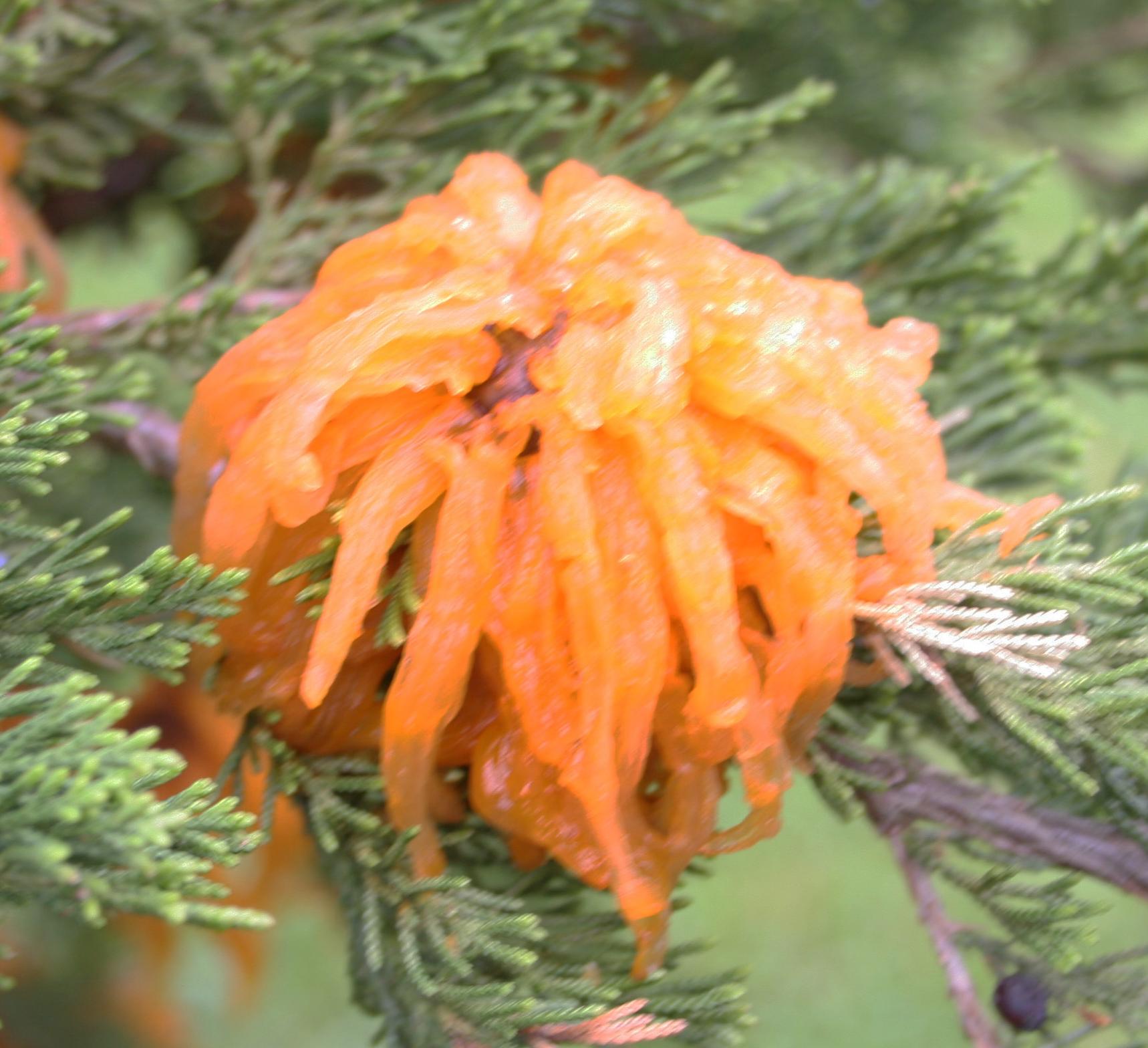Rust of Apple
Return to Diseases
Rust (Gymnosporangium juniperi-virginianae, G. clavipes, G. globosum). Three different rust diseases (cedar-apple, cedar-quince, and cedar-hawthorn) have similar symptoms. Small yellow spots develop on upper leaf surfaces in spring, shortly after apple bloom (soon after teliospores are released from galls on cedars). Leaf spots on apple enlarge, turning orange to yellow. Black fruiting structures called pycnia (not pycnidia) appear in spots on upper sides of leaves, and then in late summer, cylindrical tubes (aecial cups) form on undersides of leaves. Fruit infections are usually near calyx ends of fruit and resemble leaf lesions. The fungus does not cause repeated infections on apple later in the growing season.

Cedar-apple rust on upper leaf surface.
(Photo: John Strang, University of Kentucky)

Cedar-apple rust on lower leaf surface.
(Photo: Nicole Ward Gauthier, University of Kentucky)

Cedar-apple rust on fruit.
(Photo: Nicole Ward Gauthier, University of Kentucky)

Immature telial galls on red cedar.
(Photo: John Strang, University of Kentucky)

Sporulating telial gall on red cedar.
(Photo: John Strang, University of Kentucky)
Management:
- Resistant cultivars
- Removal of nearby hosts (cedar, hawthorn, and quince) when possible
- Fungicides (beginning at bloom)
